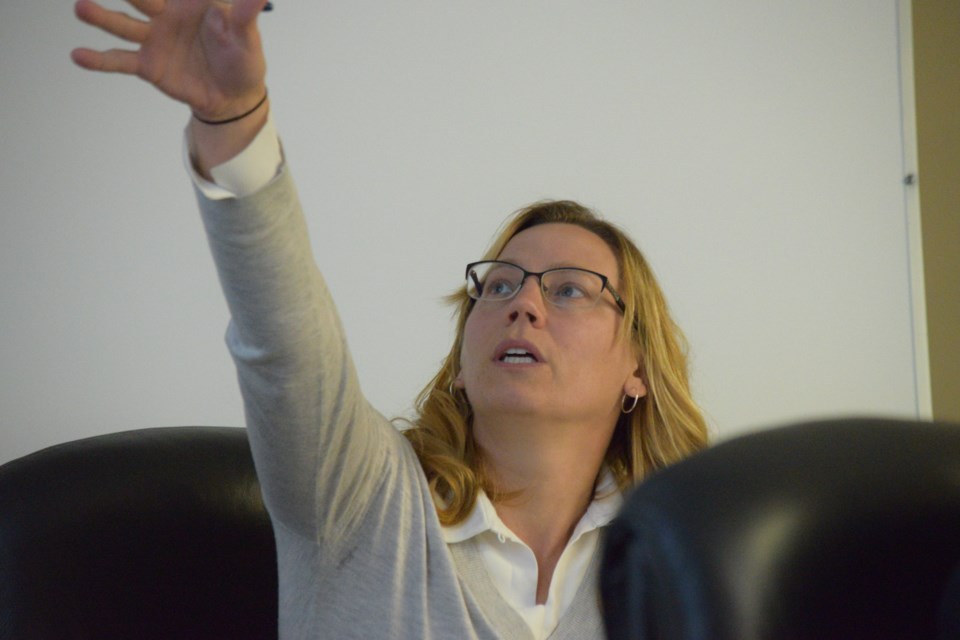BARRHEAD - The County of Barrhead will have a balanced budget for 2024.
However, finance director Tamara Molzahn told councillors on April 16 that it should not come as a big surprise to anyone; it is a requirement for municipalities under the province's Municipal Government Act (MGA).
Councillors unanimously approved the 2024 operating and capital budgets in two separate motions.
The operating budget proposes an operating budget of $19.1 million with revenues matching expenditures.
The capital budget sees spending of $7.6 millon, up from $6.5 million in the interim capital budget.
Molzahn said in December, as part of the interim budget process, which also included input from a public open house, council identified several priority projects to be completed as part of the 2024 operating budget, including continuing the municipality's road rehabilitation or shoulder pull program projected at $198,000, development of the county's Moosewallow gravel pit at an estimated $200,000 annually for the next five to seven years.
Other priority operating projects include road base stabilization and oil road rehabilitation, most notably prepping the Peanut Lake and Manola roads with Perma-Zyme to stabilize the road for planned re-oiling in 2025, the re-oiling of the Elks Beach and Lightning Bay roads and the patching of other local roads for a combined estimated cost of $508,000, inspecting and cleaning the water reservoir at $4,500, the hiring of administration support clerk at an estimated $35,000 as well as the continuation of the community hall condition reports at $14,400.
Operating budget revenue
Molzahn noted that more than half of the municipality's $19.1 million operating budget revenue comes from municipal property taxes at $10.3 million, followed by school and social housing requirements at $3 million. The latter, she said, is a flow-through collected on behalf of the province and the Barrhead and District Social Housing Association.
Other notable revenue sources include debenture proceeds at $1.5 million and $1,287,332 in other government transfers for operating, i.e. municipal sustainability grants and returns from investment at $618,000.
Molzahn noted that they equalled revenue on the expenditure side, reiterating that the province requires municipalities to bring in balanced budgets.
Molzahn pointed out that transportation services (roads, bridges and the Johnson Industrial Airport) account for the largest expenditure, taking 41 per cent of the budget at $7.9 million, followed by requisitions, i.e., school taxes and social housing at just under $3 million or 16 per cent, and utilities and waste management (water, wastewater, lagoons, landfill and transfer stations) at $2.4 million, general services and administration at $1.8 million, protective services (fire, enhanced policing, bylaw, Barrhead and Area Regional Crime Coalition and emergency management) at $1.4 million, planning and development and agricultural services at $1.3 million, recreation and cultural services (town and county recreation services and parks, library and cultural events) at $931,000, legislative and elections at $372,000 and community support services at $77,000.
Capital budget
In December, councillors approved a capital budget of $6.5 million, including the purchase or construction of $4.7 million in capital assets.
However, Molzahn said since the interim capital budget's approval, the budget has been modified, reducing money for capital expenditure while increasing money to go into capital reserves.
Priority projects include replacing a bridge, re-constructing roughly 10 kilometres of road, acquiring a new community peace officer vehicle and assorted equipment, renovating or improving the municipal office building, and purchasing a plastic mulch applicator.
The bulk of the expected $5.6 million in capital expenditures will go towards transportation, i.e. roads, bridges, and airports, at $4.1 million, with $1.3 million going towards general administration, $120,000 to utilities and waste management, $60,200 for protective services, $10,000 to agricultural services, and $5,000 for recreation and cultural services.
Sources for the capital expenditures will come primarily from reserves, with $4.1 million set aside, with another $1.2 million coming from provincial grants,$349,500 from the sale of assets and $57,600 from 2024 municipal taxes.
Reeve Doug Drozd asked administration if the municipality had any agreements or grants directly from the federal government that were not redirected or administered by the province.
Earlier this month, the Alberta United Conservative Party (UCP) government tabled Bill 18, the Provincial Priorities Act, legislation that would effectively allow the province to veto any agreement struck between the federal government and municipalities.
Molzahan said no, adding the closest thing they have is the Canada Community-Building Fund, formerly known as the gas tax, biannual grants.
"But that already flows through the province," she said.
In addition to the construction or purchase of capital assets, Molzahn said the municipality has budgeted to set aside nearly $2 million in addition to its capital reserves for future projects.
She added that the county currently has $15.6 million in reserves, adding $2.2 million before using $5.7 million on 2024 capital projects, leaving a projected $12 million.



